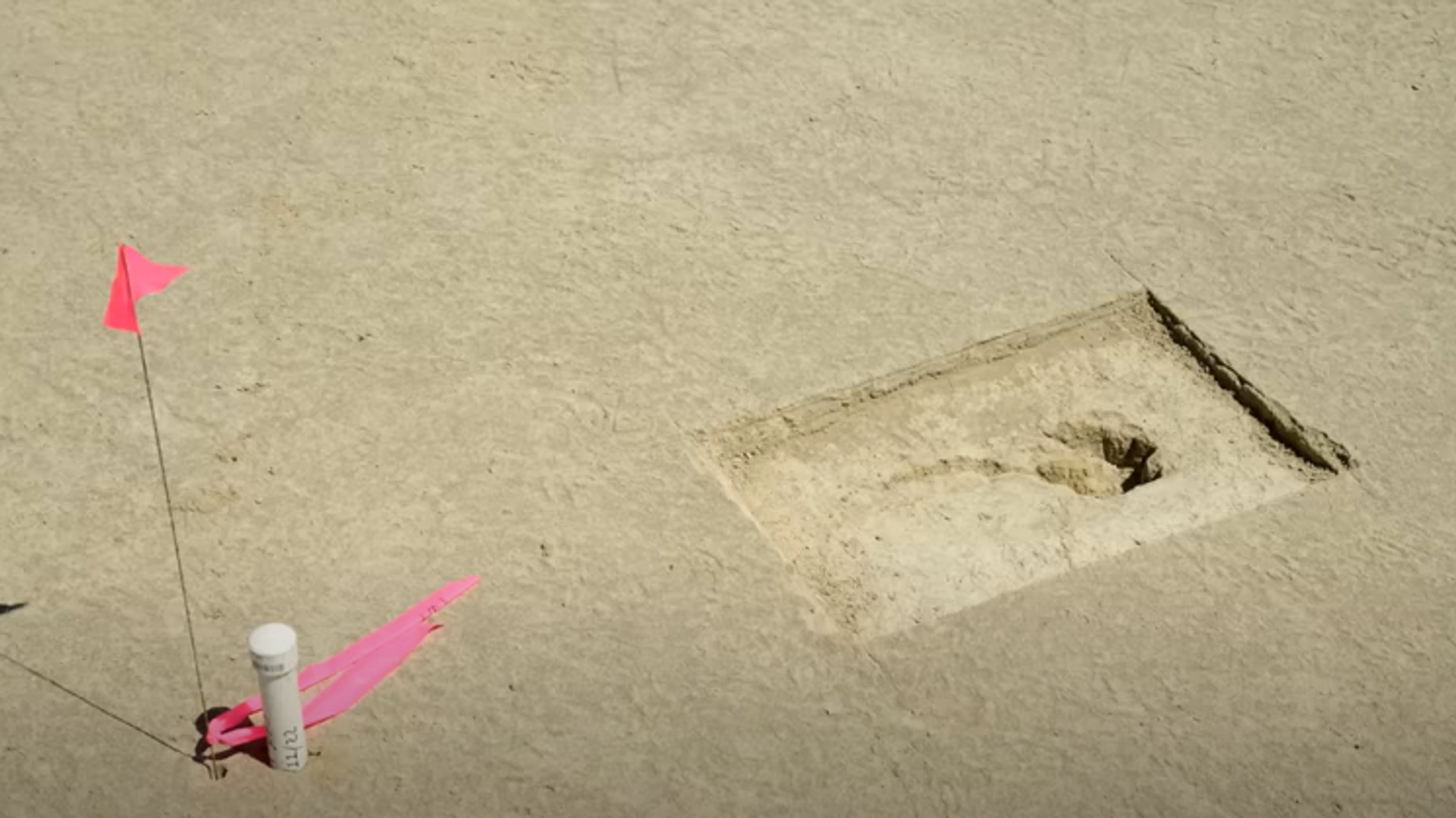https://sputnikglobe.com/20230514/oldest-human-footprints-in-germany-found-by-tubingen-researchers-1110339492.html
Oldest Human Footprints in Germany Found by Tubingen Researchers
Oldest Human Footprints in Germany Found by Tubingen Researchers
Sputnik International
The footprints provide evidence of how humans used the area, likely for food and possibly as a living space. Researchers believe that based on the footprints, including those of children and juveniles, it was probably a family outing rather than a group of adult hunters.
2023-05-14T10:57+0000
2023-05-14T10:57+0000
2023-05-14T10:57+0000
beyond politics
science & tech
germany
lower saxony
heidelberg
human species
archaeology
https://cdn1.img.sputnikglobe.com/img/07e6/08/04/1098092323_44:0:789:419_1920x0_80_0_0_21be81de9b85554ae29261d8bb72764d.png
Researchers from the University of Tubingen have discovered the oldest human footprints ever found in Germany. The footprints, believed to be 300,000 years old, were discovered near a lake in the Schoningen Paleolithic complex in Lower Saxony. Surrounded by tracks from several animals, the footprints are thought to belong to the extinct Heidelberg man (Homo heidelbergensis).Elephant tracks, belonging to the extinct species Palaeoloxodon antiquus, which was the largest land animal at the time and weighed up to 13 tons, were also analyzed. In addition, there was one rhinoceros print, either Stephanorhinus kirchbergensis or Stephanorhinus hemitoechus, which were first discovered in Europe. These animals may have gathered at the lake to drink or bathe.The researchers suggest that the findings provide insight into the paleoenvironment and the mammals that lived in the area 300,000 years ago. The various tracks at Schoningen offer a snapshot of a family's daily life and may provide information about the behavior and social composition of hominin groups, as well as spatial interactions and coexistence with elephant herds and other mammals.
https://sputnikglobe.com/20230501/archaeologists-unearth-buddha-statue-in-ancient-egyptian-port-1110011207.html
germany
lower saxony
heidelberg
Sputnik International
feedback@sputniknews.com
+74956456601
MIA „Rossiya Segodnya“
2023
Sputnik International
feedback@sputniknews.com
+74956456601
MIA „Rossiya Segodnya“
News
en_EN
Sputnik International
feedback@sputniknews.com
+74956456601
MIA „Rossiya Segodnya“
Sputnik International
feedback@sputniknews.com
+74956456601
MIA „Rossiya Segodnya“
the oldest footprints in germany discovered, 300 000 years old human footprints, heidelberg man footripnts in saxony, tuebingen university researchers
the oldest footprints in germany discovered, 300 000 years old human footprints, heidelberg man footripnts in saxony, tuebingen university researchers
Oldest Human Footprints in Germany Found by Tubingen Researchers
The footprints provide evidence of how humans used the area, possibly as a living space or searching for food. Researchers believe that based on the footprints, including those of children and juveniles, it was likely a family rather than a group of adult hunters.
Researchers from the University of Tubingen
have discovered the oldest human footprints ever found in Germany. The footprints, believed to be 300,000 years old, were discovered near a lake in the
Schoningen Paleolithic complex in Lower Saxony.
Surrounded by tracks from several animals, the footprints are thought to belong to the extinct Heidelberg man (Homo heidelbergensis).
“Depending on the season, plants, fruits, leaves, shoots, and mushrooms were available around the lake. Our findings confirm that the extinct human species dwelled on lake or river shores with shallow water. This is also known from other Lower and Middle Pleistocene sites with hominin footprints,” says Dr. Flavio Altamura, a fellow at the Senckenberg Center for Human Evolution and Palaeoenvironment at the University of Tubingen (SHEP)
Elephant tracks,
belonging to the extinct species Palaeoloxodon antiquus, which was the largest land animal at the time and weighed up to 13 tons, were also analyzed. In addition, there was one rhinoceros print, either
Stephanorhinus kirchbergensis or
Stephanorhinus hemitoechus, which were first discovered in Europe. These animals may have gathered at the lake to drink or bathe.
The researchers suggest that the findings provide insight into the paleoenvironment and the mammals that lived in the area 300,000 years ago.
The various tracks at Schoningen offer a snapshot of a
family's daily life and may provide information about the behavior and social composition of hominin groups, as well as spatial interactions and coexistence with elephant herds and other mammals.



